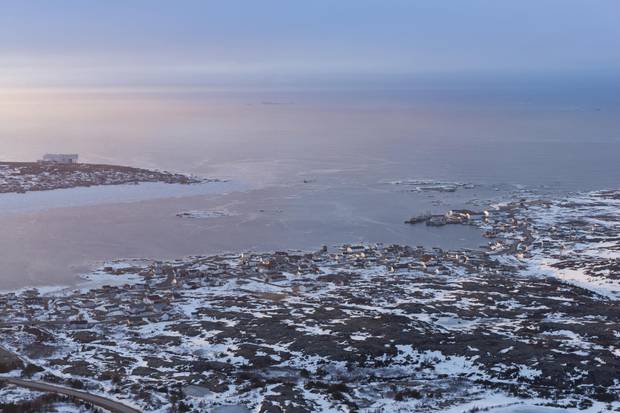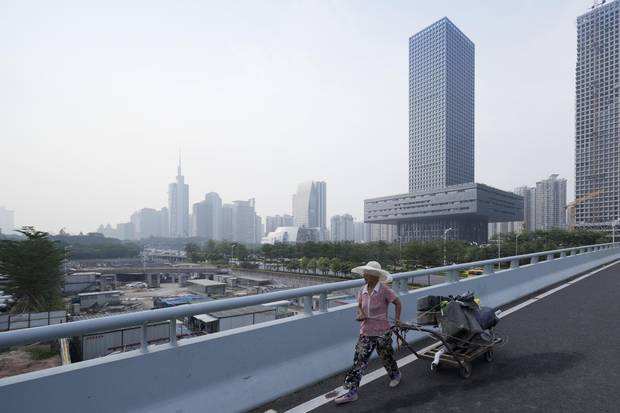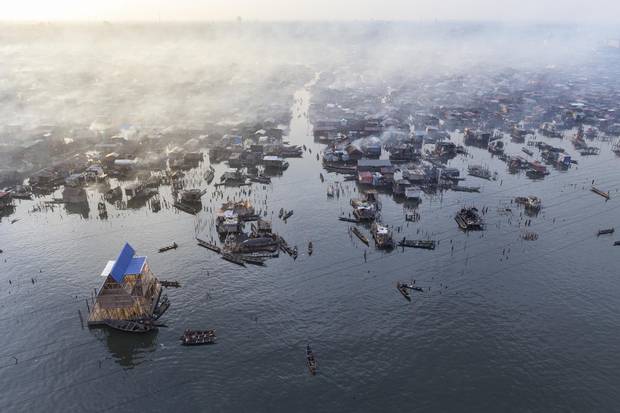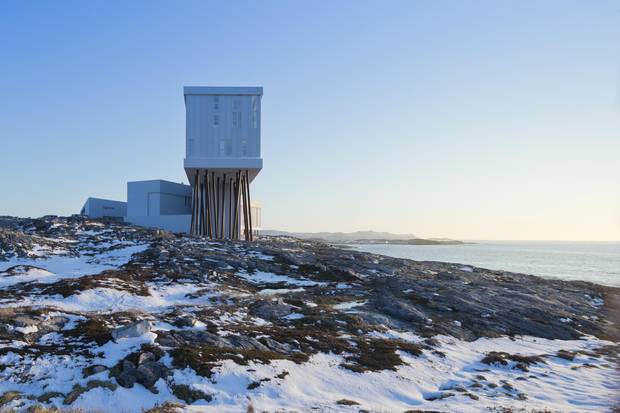When we look at the cities of the world, what stays in the picture?
That's the question that Iwan Baan insists on asking. Baan is the world's leading photographer of architecture, and the Dutchman has, in the past year, jetted between jobs in London, Hamburg, Beirut, central China, Burkina Faso and Iowa City.
Often paid to capture the work of ambitious designers, Baan insists on presenting a relatively honest view of what he sees. He leaves in the chaos at the edge of the frame.
"My background is in documentary photography," the 42-year-old said recently over breakfast in Toronto. "The goal is trying to tell stories through your photographs. It's not just a building or a nice detail; there is the city around it, how people use the space, and how all these ingredients come together."
Baan's unique view of the world matters, because it shapes the world we live in.
The world of design is radically global in its perspective; websites such as Dezeen and ArchDaily funnel a constant stream of images to architects around the world. You may not look at them, but the people who design your city certainly do.
Most of those images are paid for by the architects themselves, and they are always stylized, heavily edited and often heavily processed. If an electrical pole is in the way, or a piece of the façade is falling off, this disappears through the magic of Photoshop – except in Baan's work, where it is likely to stay in place. His clients, which include top architects such as OMA, Zaha Hadid Architects and Herzog & de Meuron, pay for a certain kind of honesty.
Baan, whose photographs are featured in the new book Portman's America, has come to dominate his field; the world of architecture, as it shifts away from "icon buildings" and "starchitecture" to a more socially engaged model, is defined by his clear visual style.
"I don't do much Photoshop," he said, sipping espresso at the Ritz-Carlton in Toronto. "I hate sitting behind the computer. Reality is often strange enough, so it's much more interesting to be there and to see it."
Baan was in Toronto for a day, giving a talk and visiting family, before getting back on the plane. His partner, who is from Ontario, and two-year-old son generally travel with him; they have homes in Amsterdam and New York State, but are more or less constantly in the air. He'd recently returned from Kathmandu, where he was researching the work of an Austrian architect, Carl Pruscha
, who spent decades working on adaptive reuse of historic buildings.
That is a personal book project, one of several Baan is working on along with paid commissions. His creative goal is to combat the "plague of sameness," he says, "that is killing human joy."
"It's more and more a generic world and city we live in: The same shops, the same developers, anywhere in the world," he argues. "And that destroys the local identity, the local building techniques."
And who can beat that sameness? He cites Herzog & de Meuron, the Swiss architects who have been tapped to design a new Vancouver Art Gallery. "They're an office that's well suited to discover a new idea and make something completely new for a particular place," Baan says.
"I believe that architecture still has an important role," he says, "in helping us to do that."
The two streams of architecture's avant garde today – experimentation with material and form on one hand, and so-called "social architecture" that aims to improve quality of life for the world's 99 per cent – come together in his work.
Sometimes his concerns and his business come together. Baan flew to Newfoundland to shoot the Fogo Island Inn, which draws on the handicraft and particular character of outport Newfoundland. The building, by Todd Saunders, is sleek and beautifully detailed, and lends itself to close-ups. Yet Baan's most powerful photo of the site is taken from the air, placing the seaside hotel in one corner of a vista that takes in a frozen inlet and the adjacent village. You can barely see the hotel, but you can see clearly how it speaks to the region's architecture and topography.

Baan’s aerial photo of the Fogo Island Inn.
Iwan Baan
"Newfoundland's vernacular architecture is all about siting, and the relationship to the water," says Zita Cobb, the inn's visionary owner. "The inn is a bit of a visitor, and Iwan got that immediately."
For architects, Baan's perspective has been welcome, says Florian Idenburg, the Dutch-American architect of the firm SO-IL, who has long collaborated with Baan. "He has a very sharp eye for the situations that arise around buildings, when perhaps things don't go as planned – and he is quick to pick up on the ironies that arise."
In Shenzhen, Baan shot the new tower for the Shenzhen Stock Exchange by the Dutch architects OMA, but rather than frame this shiny icon of global capitalism against the sky, one of his shots captures the city under construction, and a woman pulling containers of water along a highway overpass.

Baan’s photo of the Shenzhen Stock Exchange tower in Shenzhen, China.
Iwan Baan
"His interest is not in buildings, but in people – in how we are shaped by the built environment and how we react to it," Idenburg says. "Some photographers shoot materials and details; he's not interested in that."
Baan has a particular interest in what urbanists call "informal settlements." He made evocative photographs of the Torre David in Caracas, where 3,000 people had settled the unfinished skeleton of an office tower. In Cairo, he's captured self-built apartments that belong to the Zabaleen – "garbage people" – a community of Copts who make their living through painstakingly sorting and recycling waste from city households.
And Baan travelled to the Makoko neighbourhood of Lagos, Nigeria, where about 100,000 people live entirely on the water; he knows the Nigerian architect Kunle Adeyemi, who designed a floating school for the district, built by locals from affordable or scrap materials. Baan's images of the school were very compelling and probably helped Adeyemi receive an award for a similar project at the Venice Biennale of Architecture.

The Makoko neighbourhood of Lagos, Nigeria.
Iwan Baan
And yet the original floating school apparently collapsed while out of use, sparking an online critique over whether the project was merely an impractical showpiece.
But Baan points out that the school was built as a prototype, and in difficult circumstances. "In this community, every year, hundreds of houses collapse from weather conditions – or the government, who is trying to push people out and bulldozer whole neighbourhoods," he said. "The project put on the map a community which was for years on the verge of being wiped out."
In the 21st century, it may be that architecture's most urgent task will be helping to suggest how design can address the conditions in places such as Makoko; work such as Adeyemi's, and Baan's, bring attention to the incredible social needs in the rapidly urbanizing cities of the developing world.

Baan’s images of Kunle Adeyemi’s floating school likely helped the Nigerian architect receive an award for a similar project at the Venice Biennale of Architecture.
Iwan Baan
"I was just in Mumbai," Baan mused when we met, "and just looking at the need for housing, it's overwhelming. It can be depressing at times."
But that is where architecture comes in: "It still spurs the imagination of what the place could become," he says. "It provides a utopia."
Ideas – and pictures – can, perhaps, change the world.


